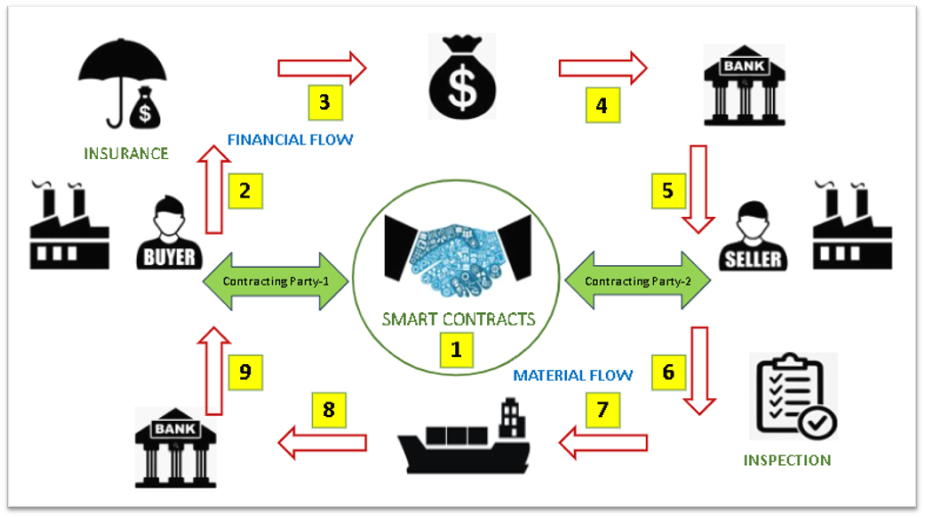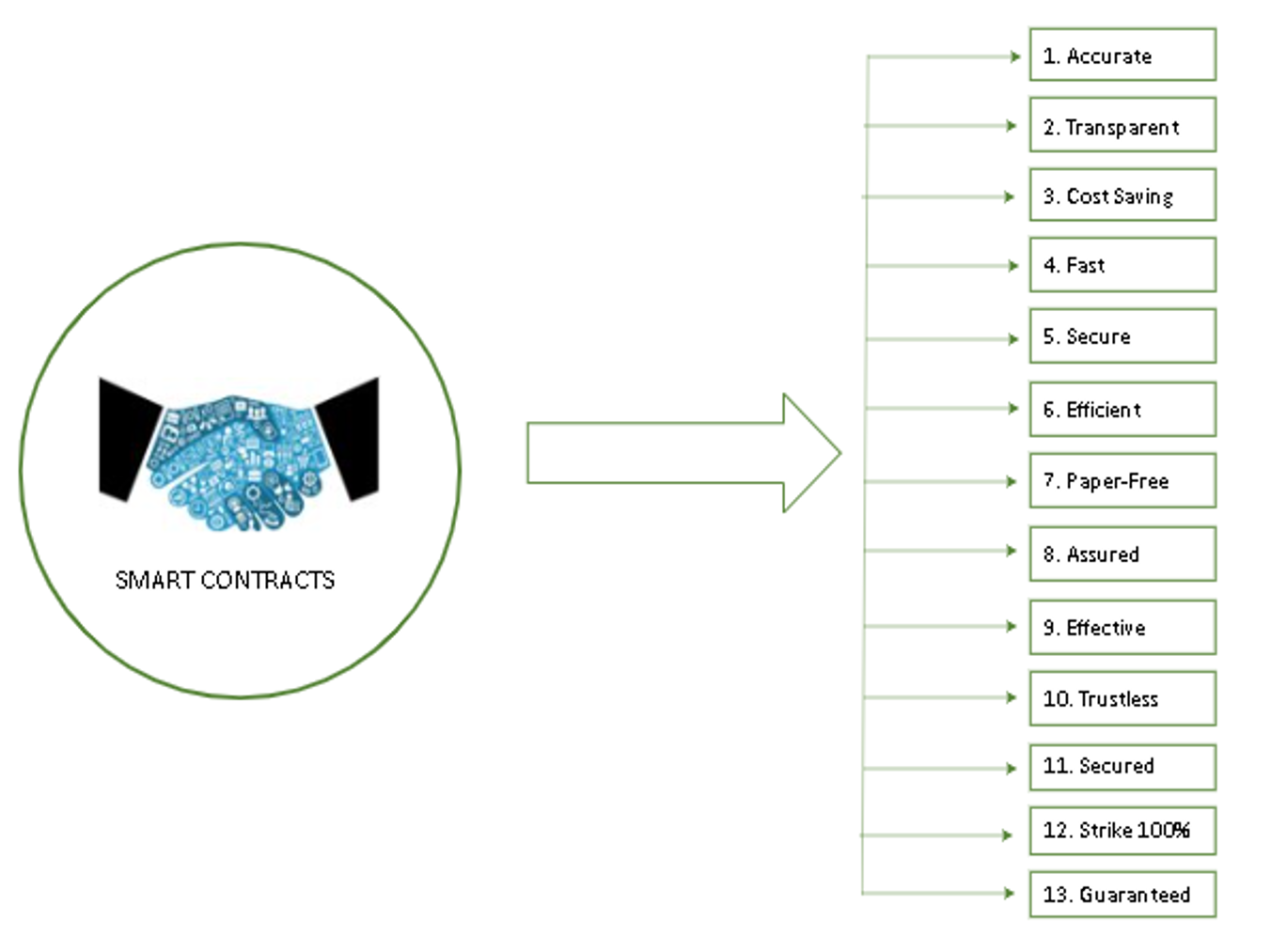Well, smart contracts are just simple computer codes that are run on the blockchain, and they are self-executable when we meet certain conditions. They are immutable, transparent, and, most importantly, they are decentralized. Clearly, this gives them an edge over traditional contracts.Nick Szabo introduced the term smart contract in 1990. He described a smart contract as a digital form of a set of promises, and when these promises are met, the users are guaranteed a specific outcome.
Additionally, all of these premises of smart contract are possible because of blockchain. Smart contract found recognition due to its induction in the Ethereum blockchain, where anyone can code a smart contract using the Ethereum Virtual Machine or Solidity.
Smart contracts are one of the safest modes of transaction today. Though a crude version of the Smart contract existed in the Bitcoin blockchain, but Ethereum with Turing Complete language introduced a superior version of the smart contract, which has even more incredible computation prowess.?Today, there is no limit on what a smart contract can do. We will talk more about this later in the article. Before that, let us see how it works.


How do smart contracts work?
A smart contract, as we mentioned above, is self-executable. So, let us see the basic principles.
Offer: The transaction is initiated by the first part. The first party writes a contract with an if-then statement using Solidity. Then the agreement is passed to the blockchain.
Negotiation: After the contract appears on the blockchain, the contract is open for all the related parties to see. The parties can negotiate on the contract terms. Make sure that you verify all the terms in this step because once it is signed, then there is no going back.
Approval: Once all the parties have approved the contract terms, then triggering events are put into place. Triggering events can be expiry date, due date, strike pass/ stop-loss, or other conditions the parties see fit. After that, the contract is approved, and it becomes immutable.
Self-Satisfying conditions: After approval. It can self-verify the conditions inside the contract using real-time data from Oracles or IoT devices like sensors or cameras.
Triggering event: The smart contract is triggered when the conditions are met, Then the assets are transferred, or the underlying outcome occurs.
Undoubtedly, this might sound confusing.
Let us better understand it with an example.
Suppose a person called A wants to buy a house from B. To do that, A will write a smart contract on the Ethereum blockchain. Then negotiations will occur, and the final agreement is approved between both parties.
Let us assume the contract says that when B pays A 500 Eth (Eth is the native token of the ethereum blockchain), that is the triggering condition. After which, the contract will transfer the house’s deed to B. Thus, B is getting ownership of the house.
All of this sounds simple, isn’t it?
Yeah, it is that simple. While doing this, both the parties made the transaction without intermediaries like Banks, lawyers, or brokers. Thus, both parties uphold ultimate trust while saving both time and money.
Save Money and Time
Smart contracts are self-executing. That means you do not have to depend on your lawyer or bank to set up appointments and handle the transactions. The contract can do all of this by itself. Thus, you end up saving lots of money and time required to fulfill manual work.
Trust and Transparency
Since smart contracts are written on the blockchain, that means no one can change them after the contract has been written. Moreover, every node on the blockchain can verify the contract. If someone tries to pass on a fraudulent transaction, then it would be immediately rejected by the other nodes.
Accurate
The smart contract depends on real-time data from Oracles. That means they have a 100% strikethrough triggering rate once they meet all the conditions. Here, you do now have to worry about technical errors that are involved with manual work.
Security
The smart contract we write on a blockchain is a distributed ledger. That means every set of entries is connected with previous and subsequent entries. To change a particular entry, hackers need to change all the data in that specific blockchain. This is next to impossible as hackers will need over 51% of all the computers running that blockchain.
Backup
All the contracts uploaded on a blockchain are present in every computer on the network. So, even if you lose the contract, you can gain access to it from a computer that has access to the blockchain. This makes sure that there is no loss of data. You can even use other contracts available on the blockchain as a template or inspiration to create your contract.

